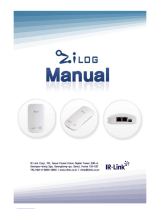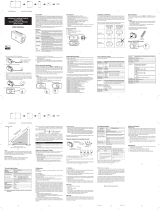
Zilog TCP/IP Software Suite
Quick Start Guide
QS004914-1211 Page 9 of 12
11. Select Build → Set Active Configuration to open the Select Configuration dialog
box. In this dialog, select the RAM configuration.
12. Select
Build → Rebuild All to rebuild the application and generate a
ZTPDemo_xxx_Ram.lod file.
13. Select
Debug → Download Code to download the ZTPDemo_xxx_Ram.lod file,
located in the project path, to the eZ80 Development Platform.
14. To run the demo application, select
Debug → Go. To use the ZTP demo application,
see the U
sing ZTP section on page 10.
Running an HTTP Server on the eZ80F910200KITG Kit
Observe the following procedure to run an HTTP server using the eZ80F910200KITG
Development Kit.
1. Set up the hardware as displayed in Figure 2
on page 5.
2. Launch ZDS II by clicking the Windows
Start menu and selecting All Programs.
Scroll through the list of programs and select the
Zilog ZDS II – eZ80Acclaim! X.Y.Z
folder option, then click
ZDS II – eZ80Acclaim!_A.B.C.
3. From the
File menu in ZDS II, select Open Project to open the sample ZTP demo
project. This project is located in the following path:
<ZDS Installed Dir>\ZTP\ZTPX.Y.Z_Lib\ZTP\SamplePrograms\
ZTPDemo\ZTPDemo_F91_Mini.zdsproj>
4. FollowSteps 4 through 10 in the Running the RAM-Based ZTP Demo Project Using
ZDS II section on page 7.
5. Select
Build → Set Active Configuration to open the Select Configuration dialog
box. In this dialog, select the
Flash configuration.
6. Select
Build → Rebuild All to rebuild the application and generate a
ZTPDemo_F91_Mini.hex file.
7. Select
Debug → Download Code to download the ZTPDemo_F91_Mini.hex file,
located in the project path, to the eZ80F91 Mini E-Net Development Platform.
8. To run the demo application, select
Debug → Go.
9. During initialization, the
ZTPDemo project will display its IP address in the PC’s ter-
minal program. Record this IP address (write it down) so that it can be used in subse-
quent steps.













